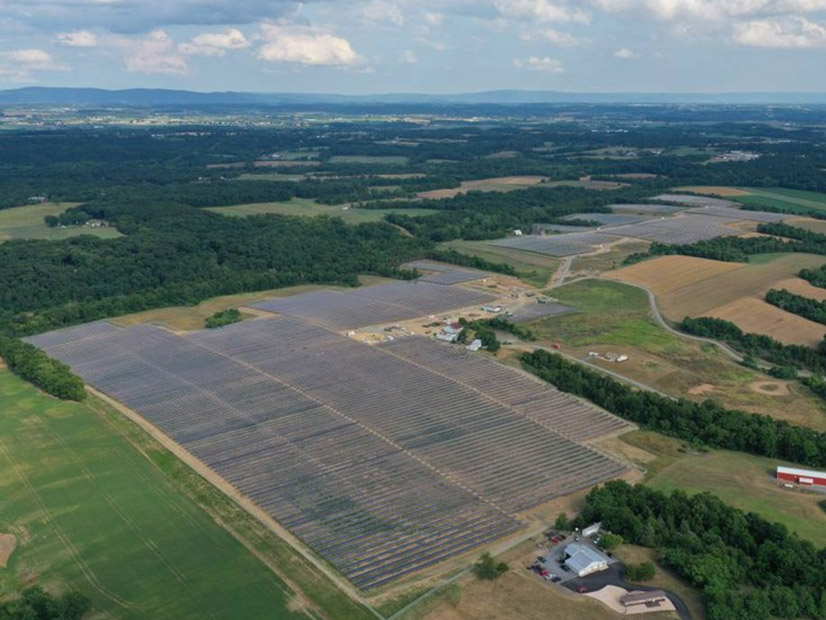A report released last week by the Pennsylvania Department of Environmental Protection (DEP) encourages the state to significantly increase its energy storage capacity and pair it with an expansion of solar energy.
The report identifies a series of programs, policies and incentives lawmakers can implement to add energy storage technologies to the state energy portfolio. It comes on the heels of last month’s announcement by Gov. Tom Wolf that nearly 50% of the electricity used by the state government will be produced by seven new solar arrays composed of 191 MW of capacity to be built around Pennsylvania. (See Pa. to Source 50% of Govt. Electricity from Solar.)
“Solar-plus-storage … can help slow down climate change by incorporating more clean renewable energy into Pennsylvanians’ daily electricity use, and it can also make the grid more reliable during extreme weather events, better protecting Pennsylvanians’ health and safety as well as critical facilities,” DEP Secretary Patrick McDonnell said.
Pennsylvania currently has about 1.5 GW of storage capacity, the report found, including 1.07 GW of traditional pumped hydro facilities, 18 MW of lithium-ion batteries, 12.5 MW of lead carbon batteries, 6 MW of ice and chilled water thermal storage, and smaller amounts of other technologies.
The report recommends setting a state energy storage capacity target similar to ones created in seven other states. Other recommendations include convening a statewide storage issues forum to discuss the issue, designating public funding to increase storage deployment, establishing incentive programs for storage projects and accelerating microgrid deployments at critical facilities.
“This look at our current and potential statewide energy storage capacity provides leaders in the utility, government, industry, academia and other sectors with information to make proactive decisions to protect Pennsylvania from the worst impacts of a changing climate,” McDonnell said. “Interest has steadily increased in rooftop solar and other distributed solar energy systems in the past decade, but as we move to make real progress in addressing climate change, we need to also move proactively and thoughtfully in the direction of grid-scale solar and storage.”
As of February there were 64 solar-plus-storage projects, totaling more than 2.3 GW, in the PJM planning queue, according to the DEP. Officials said that amount reflects a recognition of the value of solar-plus-storage for the state.




